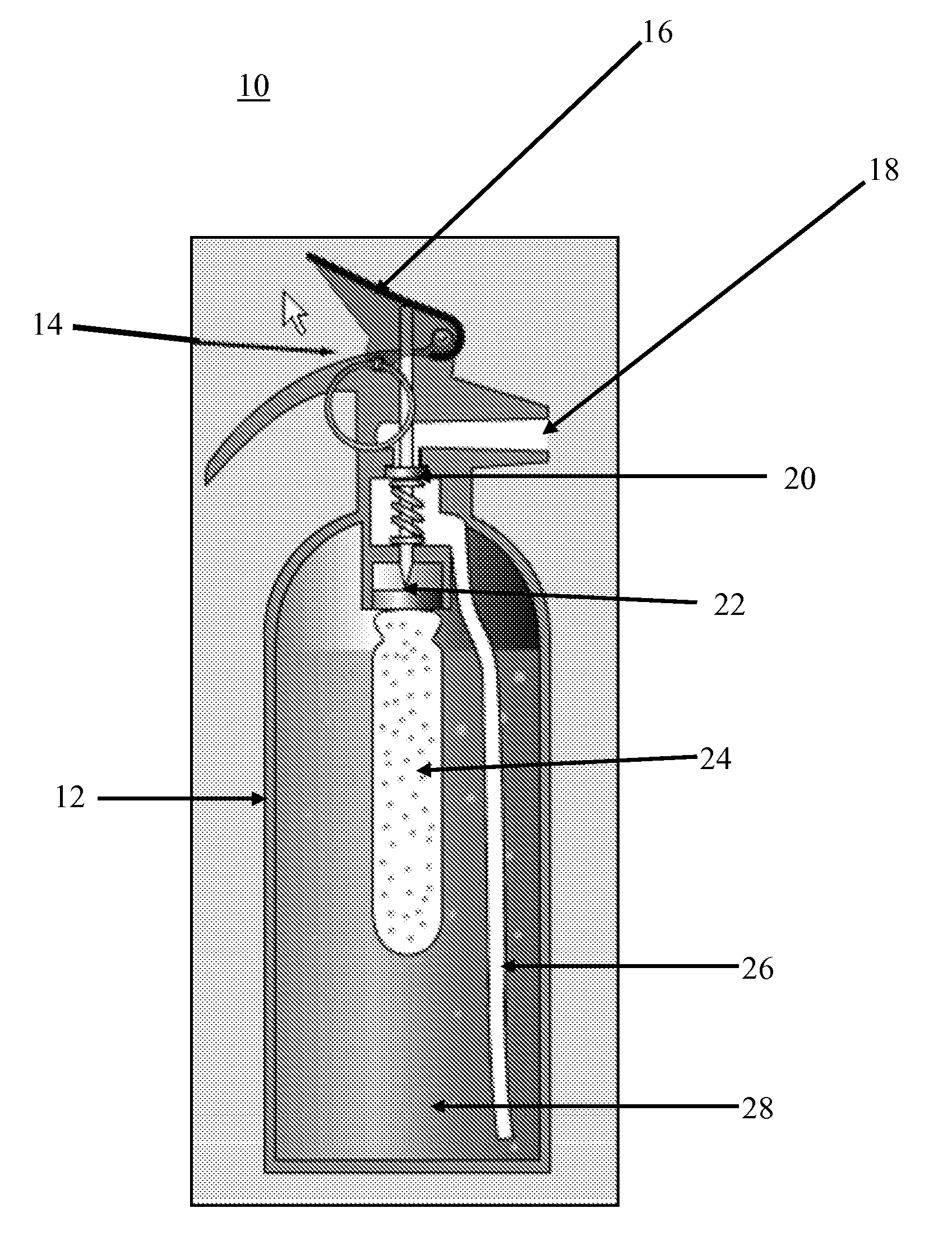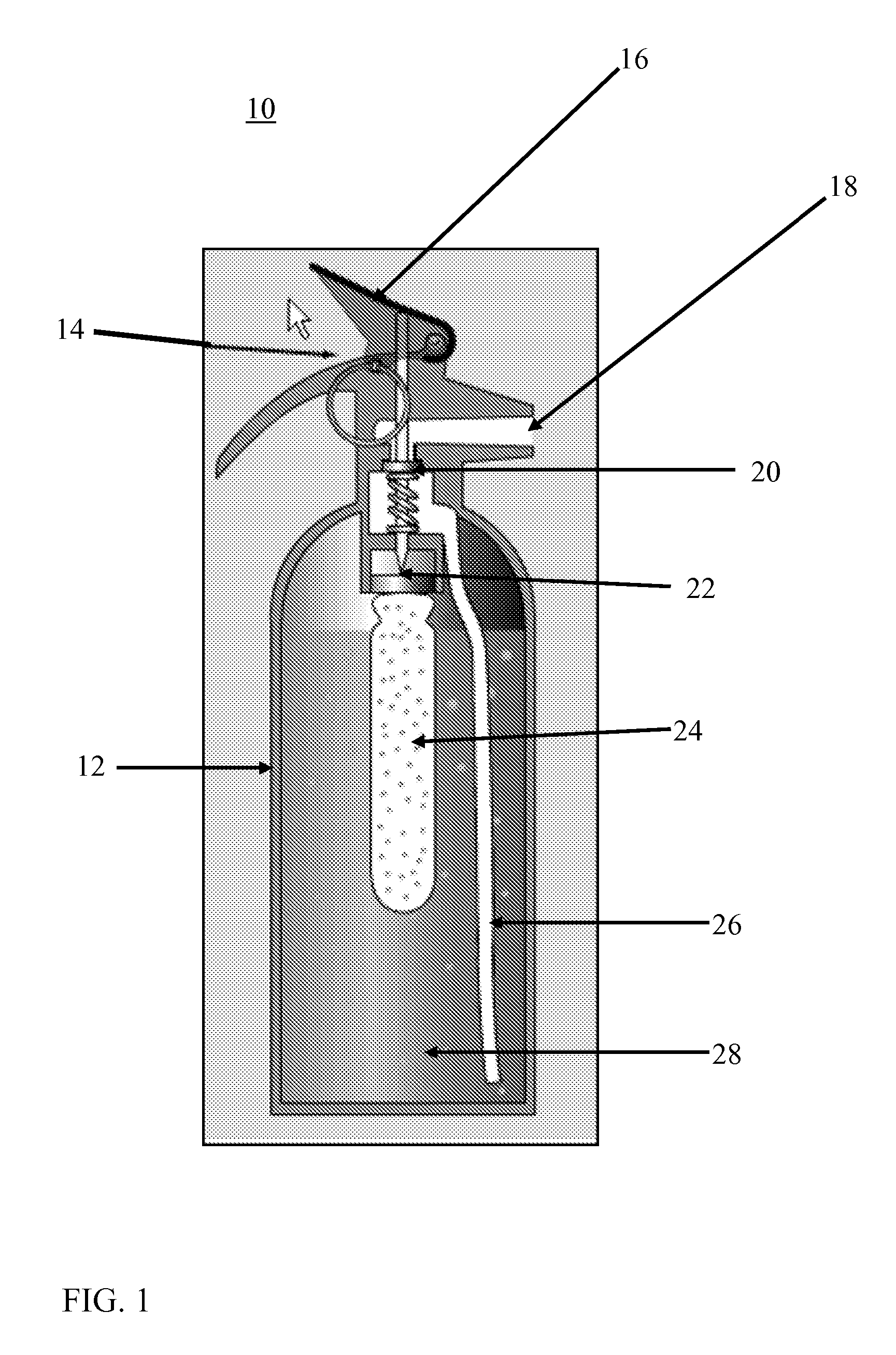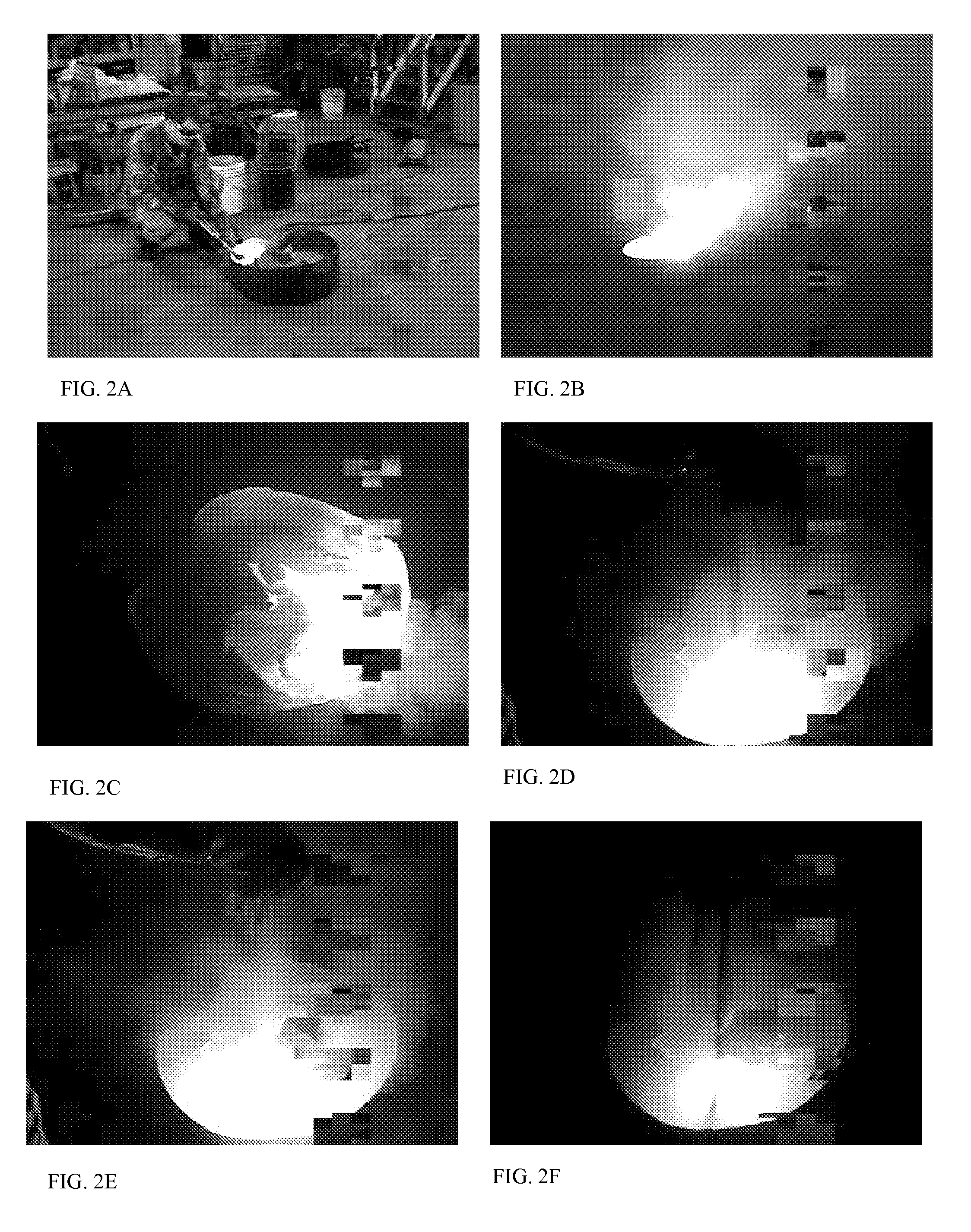Method and apparatus for removing oil spills and extinguishing fires
a technology for extinguishing fires and oil spills, applied in the field of hazardous liquid spill removal and extinguishing fires, can solve the problems of non-recyclable glass being used, and achieve the effect of convenient us
- Summary
- Abstract
- Description
- Claims
- Application Information
AI Technical Summary
Benefits of technology
Problems solved by technology
Method used
Image
Examples
example i
Glass Particles do not Absorb Water
[0061] Colored crushed glass, screened through 40 mesh was applied on clean water, without oil. The crushed glass was applied on the water surface until it sank. The water was poured out from the container and the crushed glass was removed after about an hour. The crushed glass was observed and it was determined that the crushed glass did not absorb water for up to three days.
example ii
Glass Particles Adsorb Oil from Water and Form Aggregate that Does not Leach
[0062] Oil was poured in a tank containing water to simulate an oil spill. Crushed glass was applied on the surface of the oil spill. The crushed glass noticeably adsorbed the oil and sank to the bottom of the tank in a clump. The water from the tank was emptied out. The crushed glass-oil mixture came out bonded together. More crushed glass was added to the crushed glass-oil mixture and was removed. Adding additional glass formed a ball with a petroleum base, which may be further recycled and used for other purposes. Such as, for example, petroleum silica based product, water repellant product, roof shingles, asphalt, fuel cake or fuel source.
example iii
Glass / Oil Aggregate is Inert and Does not Leach Waste
[0063] Oil was poured in a tank containing water to simulate an oil spill. Colored screened crushed glass was applied on the surface of the oil spill. The crushed glass noticeably adsorbed the oil and sank to the bottom of the tank in a clump. The crushed glass-oil mixture clump was left to sit on the bottom of the water tank for about three months. The crushed glass-oil mixture was still clumped together and the water above it was clear. Water did not get into the clump.
PUM
| Property | Measurement | Unit |
|---|---|---|
| temperature | aaaaa | aaaaa |
| temperature | aaaaa | aaaaa |
| melting point | aaaaa | aaaaa |
Abstract
Description
Claims
Application Information
 Login to View More
Login to View More - R&D
- Intellectual Property
- Life Sciences
- Materials
- Tech Scout
- Unparalleled Data Quality
- Higher Quality Content
- 60% Fewer Hallucinations
Browse by: Latest US Patents, China's latest patents, Technical Efficacy Thesaurus, Application Domain, Technology Topic, Popular Technical Reports.
© 2025 PatSnap. All rights reserved.Legal|Privacy policy|Modern Slavery Act Transparency Statement|Sitemap|About US| Contact US: help@patsnap.com



